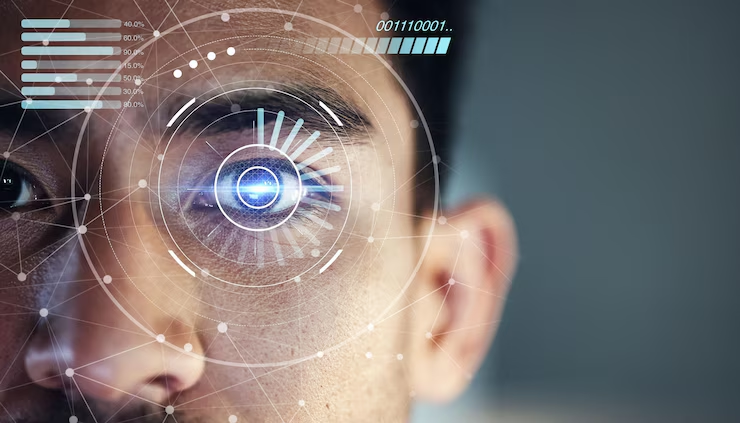The Evolution of the Facial Action Coding System in Psychology and AI
- thelightbulbai
- Mar 20
- 4 min read

The facial action coding system (FACS) has become a cornerstone in both psychology and artificial intelligence (AI), revolutionizing how we understand and interpret human emotions. Originally developed as a tool for psychologists to study facial expressions, it has since evolved into a critical component of AI-based emotion detection and behavioral response measurement. This blog explores the journey of the facial action coding system, its applications, and its transformative impact across disciplines.
The Origins of the Facial Action Coding System
The facial action coding system was first introduced in the 1970s as a method to categorize human facial movements. It breaks down facial expressions into individual components called Action Units (AUs), each corresponding to a specific muscle movement. For example, a smile might involve the activation of AU12 (lip corner puller) and AU6 (cheek raiser).
This system provided psychologists with a standardized way to analyze facial expressions, enabling them to study emotions with unprecedented precision. Early applications focused on understanding emotional responses in clinical settings, such as diagnosing mental health conditions or studying nonverbal communication. The facial action coding system quickly became a gold standard for microexpression analysis, allowing researchers to detect fleeting emotions that often go unnoticed.
From Psychology to AI: A Seamless Transition
As technology advanced, the facial action coding system found a new home in the world of artificial intelligence. Researchers recognized its potential for training machines to recognize and interpret human emotions. By integrating FACS into AI algorithms, developers could create systems capable of AI-based emotion detection with remarkable accuracy.
This transition was fueled by the growing demand for applications in areas like customer experience, security, and mental health. For instance, AI systems using the facial action coding system can analyze customer reactions during product testing or detect signs of stress in employees. The ability to perform microexpression analysis at scale has opened up new possibilities for understanding human behavior in real-time.
Applications in Modern Technology
Today, the facial action coding system is at the heart of many cutting-edge technologies. One of its most prominent applications is in AI-based emotion detection, where it powers systems that can read and respond to human emotions. These systems are used in diverse fields, from healthcare to marketing, enabling more personalized and empathetic interactions.
Another key application is in behavioral response measurement. By analyzing facial expressions, researchers and businesses can gain insights into how people react to stimuli, such as advertisements or therapeutic interventions. This data is invaluable for refining strategies and improving outcomes.
Moreover, the integration of FACS with AI has enhanced its capabilities. Modern systems can now process vast amounts of data in real-time, making microexpression analysis faster and more accurate than ever before. This has significant implications for fields like security, where detecting subtle emotional cues can be critical.
Challenges and Ethical Considerations
Despite its many benefits, the use of the facial action coding system in AI is not without challenges. One major concern is the potential for bias. If the data used to train AI systems is not diverse, the algorithms may struggle to accurately interpret expressions across different demographics.
Ethical considerations also come into play, particularly regarding privacy. The ability to perform AI-based emotion detection raises questions about consent and data security. How much should we allow machines to "read" our emotions, and who should have access to this information?
These challenges highlight the need for responsible development and deployment of technologies based on the facial action coding system. By addressing these issues, we can ensure that its benefits are realized without compromising individual rights.
The Future of the Facial Action Coding System
Looking ahead, the facial action coding system is poised to play an even greater role in both psychology and AI. Advances in machine learning and computer vision are expected to further enhance its capabilities, making microexpression analysis more accessible and accurate.
In psychology, FACS could lead to breakthroughs in understanding complex emotions and their impact on behavior. In AI, it could enable more sophisticated applications, such as virtual assistants that respond to emotional cues or systems that monitor mental health in real-time.
The integration of FACS with other technologies, such as wearable devices, could also expand its applications. For example, combining behavioral response measurement with physiological data could provide a more comprehensive understanding of human emotions.
Conclusion
The facial action coding system has come a long way since its inception, evolving from a psychological tool to a cornerstone of AI-based emotion detection. Its ability to perform microexpression analysis and measure behavioral responses has transformed how we understand and interact with human emotions.
As we continue to explore its potential, it is crucial to address the challenges and ethical considerations associated with its use. By doing so, we can harness the power of the facial action coding system to create technologies that are not only innovative but also respectful of individual privacy and diversity.
In the years to come, the facial action coding system will undoubtedly remain a key player in the intersection of psychology and AI, shaping the future of emotion recognition and human-computer interaction.
Read more related blogs:



Comments